If you are only going to do one thing, you better do it well.
In the popular TV show Stargate SG-1, the third episode of the tenth season is entitled “The Pegasus Project.” The plotline is something convoluted about the lost city of Atlantis in the Pegasus galaxy and wormholes (of course). I can only assume that the new wireless DAC/amp from Dethonray, the Pegasus SG-1, also uses space-age wormhole technology to transmit sound.
The SG-1 is an interesting product regardless of the tech involved. Sure, we’ve got tons of portable DAC/amps in the market – ‘portable’ means integrated DACs and headphone amplifiers that contain a battery, so they don’t drain the source. But unusually, the SG-1 ONLY connects via a wireless wormh… err, Bluetooth connection – no wired USB option is available.
- Solid Bluetooth performance
- Impeccable build and looks
- Unique, rich, and dynamic sound signature
- A boutique product and experience
- Upgradeable firmware to customize the sound
- Sharp corners and edges
- Buggy software
- Awful firmware flashing program
- Quirky volume control
- No USB DAC mode
- High cost for a dedicated device
- Low-level background hiss
- Not the longest battery life
- Objectively poor measurements
“But Bluetooth isn’t HiFi, and it ruins my life by not being lossless!” the audiophile purists will exclaim.
Dethonray intends to change some minds. Priced firmly in the ‘not for casual users’ range between USD$300-$500, the SG-1 is a divisive dedicated device that will either attract or repel purchasers. It’s exactly what you’ve been looking for, or you just won’t get it.
Housed in a distinctive case, the SG-1 boasts such innovations as a DPPU (Desktop Plus Power Unit) – a dual high-density battery customized power system, customizable firmware to change the sound signature, and a ‘touch and feel’ algorithm volume control.
Is the SG-1 a look at the future of portable audio or some sort of alien tech we just can’t comprehend? Step through the gate and see what’s on the other side.
Company Overview
Located in Shenzhen, China, Dethonray is the brainchild of audio engineer Anson Tse. It’s a small-scale boutique audio brand named for a violin recording entitled ‘Dethon’ and (I assume – against my editor’s best intentions) ‘death-ray.’ Proud to be “tech and sound geeks like you,” Dethonray strives to forge true HiFi quality hardware through innovation.
The brand has released the Prelude DTR1 DAP, Honey H1 DAC/amp, Tender 1 IEMs, and the DTR1+ DAP.
Technical Specifications
- Form: Portable, Bluetooth, DAC, Amp
- DAC: ES9038Q2M
- Frequency Response (Hz): 20Hz-20kHz
- THD: 0.06%
- SNR: 104db
- Power Output (max): 2.9v @32Ω SE, 2.8v @32Ω balanced
- Analog Outputs: 3.5mm, 4.4mm balanced
- Bluetooth Audio Codec: SBC, AAC, aptX, aptX-L, aptX-LL, aptX-HD, LDAC
- Battery Life (hrs): 8 hours (SE), 6 hours (balanced)
- Battery: 2000mAH
- Charge Time (hrs): 3.5 hours @5v/2A
- Weight (g): 185g
- Dimensions: 117.5×59.2x16mm

Packaging
The SG-1 comes in a basic black cardboard box emblazoned with “An expedition in pursuit of supreme audio experience.” A white sticker identifies the unit name on the side of the box. Inside, the SG-1 is nestled in foam with a USB charging cable and an inspection card.
And that’s all, folks.
In the box
- Pegasus SG-1
- USB-a to USB-c charging cable
- Inspection card
This is not an exceptionally generous package for a device at this price point. I would appreciate an included protective case or even a manual.
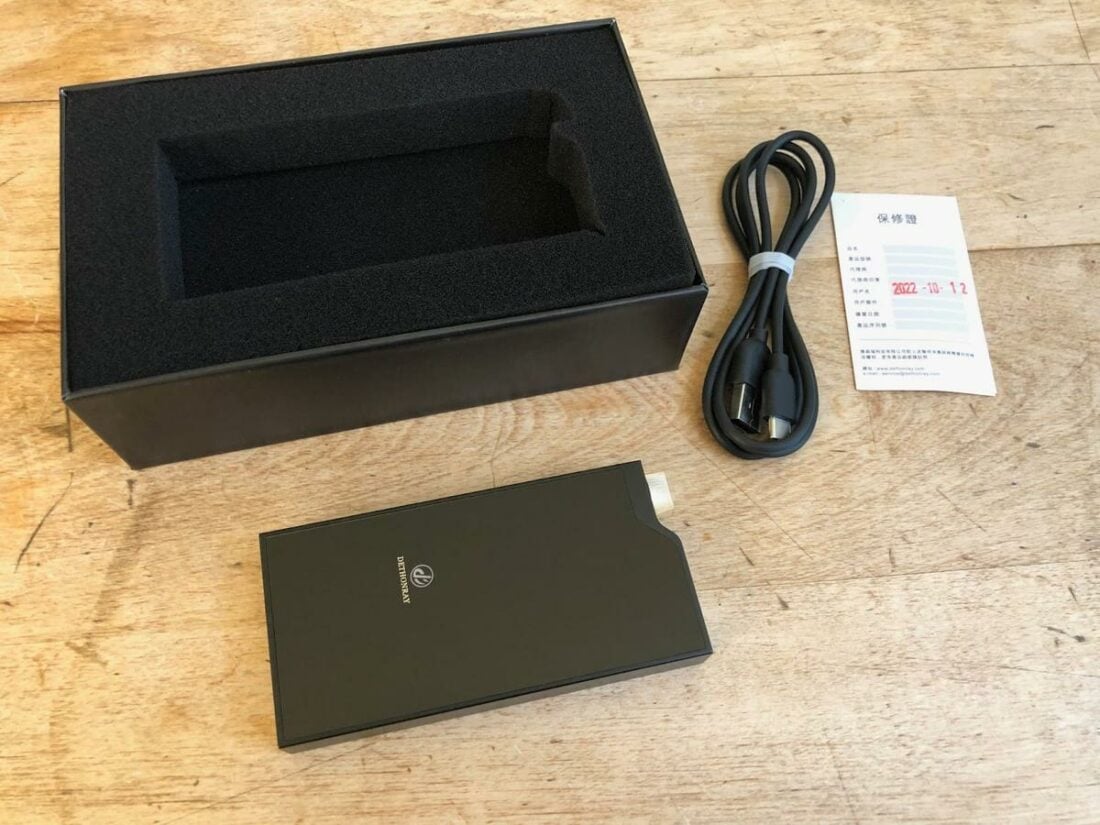
Design
Those familiar with Dethonray’s Honey H1 USB DAC/amp, will see the same design language shared in the SG-1, but now with a superior fit and finish. The shape and size are similar, but the overall feeling is of a more polished device.
The rounded triangular volume/power knob on the top is the focal point, with the 4.4mm and 3.5mm headphone outputs beside it. The gold color of the knob and rings around the sockets are very premium looking.
The left side contains the play/pause, forward, and back buttons, as well as a golden-colored high/low gain switch. The bottom houses the USB-c charging port and a LED indicator. While all other surfaces are matte aluminum, the front panel is constructed of smooth plastic (to help Bluetooth reception) and has a backlit logo which indicates the Bluetooth status.
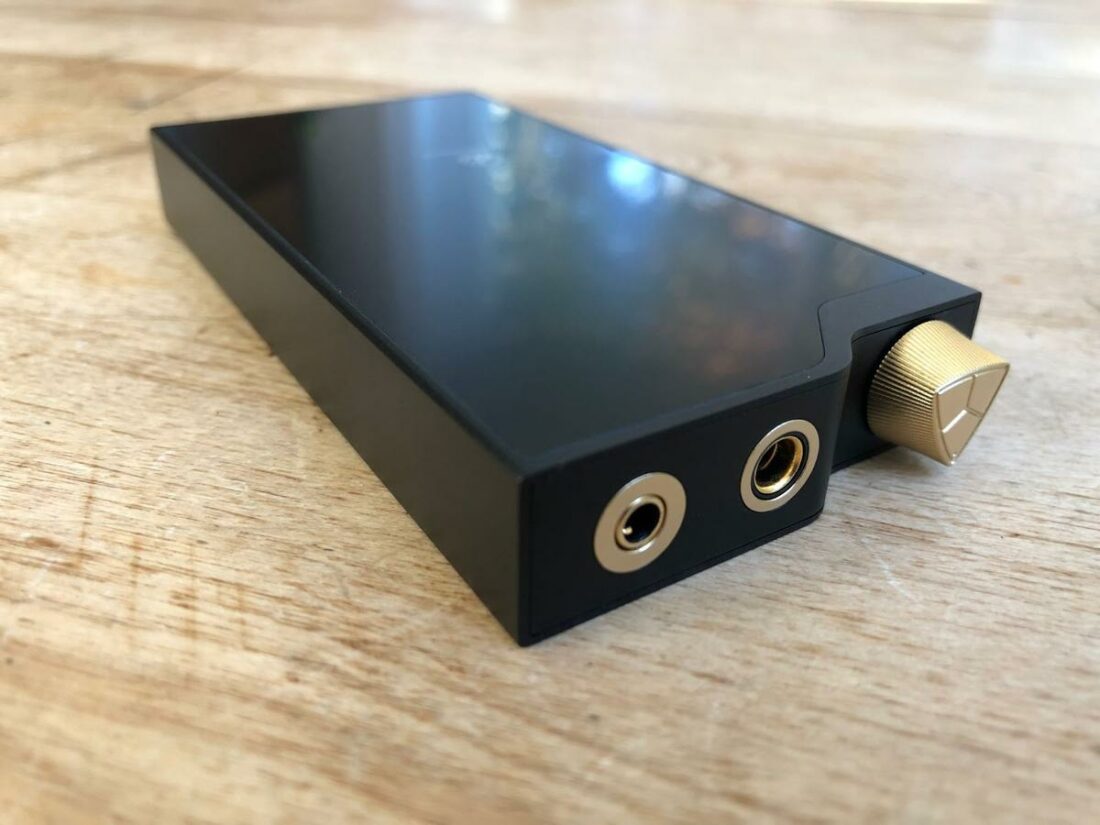
The edges and corners are sharper than the norm on this sort of device – a case would help make the SG-1 a little more hand-friendly. While my SG-1 is basic boring black, it can be had in purple, green, or red. There are rumors of a more powerful, balanced output only, limited-edition, gold version on the way.
The volume control uses Dethonray’s “Touch and Feel algorithm” to control the volume ramp in reaction to turning the knob. Rather than a hardware component, software adjusts the volume level. In person, it’s somewhat difficult to get used to, and feels like the change lags behind the turn of the knob because the volume adjusts when the knob stops moving.
In the end, it works fine, but it’s a quirk of using the SG-1. My advice is to go slow and wait for the volume to catch up.
On a positive note, the digital volume control has none of the channel imbalance often encountered with portable devices with analog potentiometers.
Internals
The heart of the Pegasus SG-1 is the ESS ES9038Q2M flagship mobile chipset, which can be found in other devices such as the Shanling M6 DAP. This chipset is touted as having “integrated asynchronous sampling rate conversion” and “THD compensation”.
Although, with all such impressive-measuring digital devices, much of the final sound comes down to the implementation rather than the chip itself.
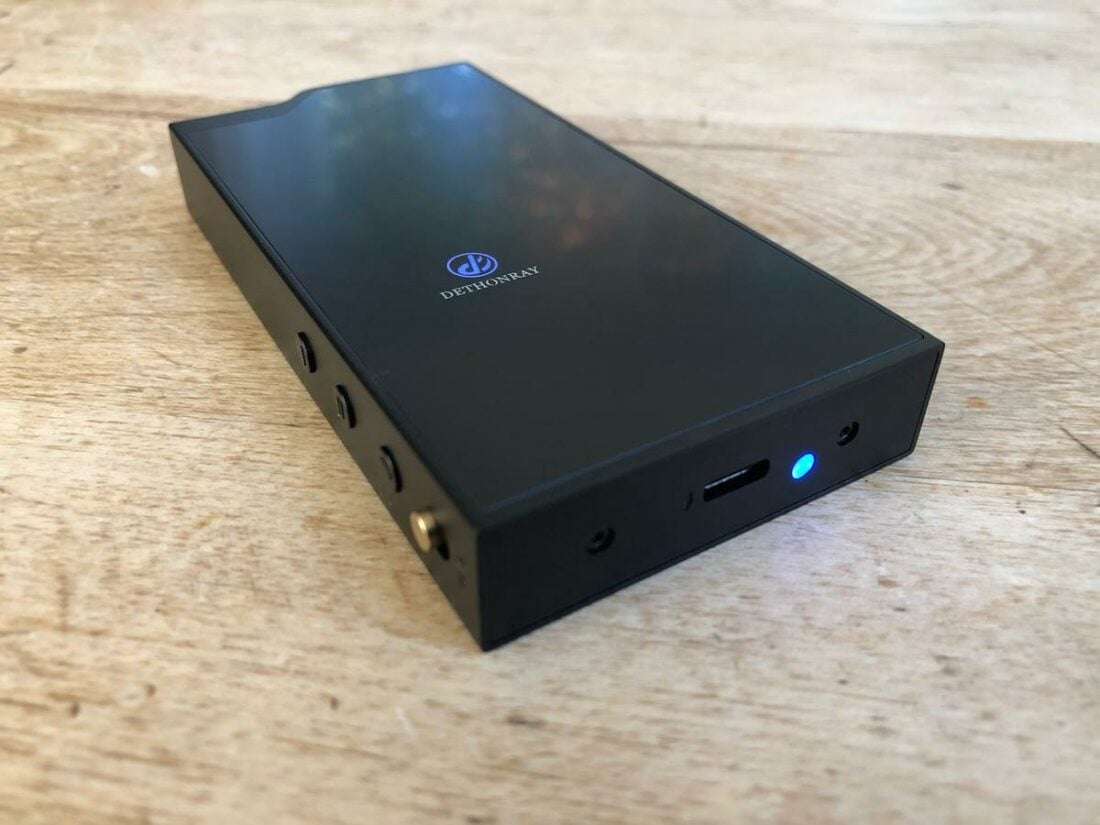
Battery
Dethoray rates the battery life as between 6-8 hours depending on headphone output and codec used. In practice, this is reasonably accurate and around 5 hours seems about the minimum I run into with a variety of uses.
A full charge takes over 3 hours, so it’s not the quickest device to get back running, although it can be used while plugged in to charge – which rather defeats the whole ‘wireless’ concept. The SG-1 gets warm to the touch while in use and during charging, but never to alarming levels.
The bottom LED beside the USB-c port indicates the SG-1 battery level and charging state: 70-100% – green, 30-70% – blue, <30% – red. Charging when off – red. Charging when on – pink.
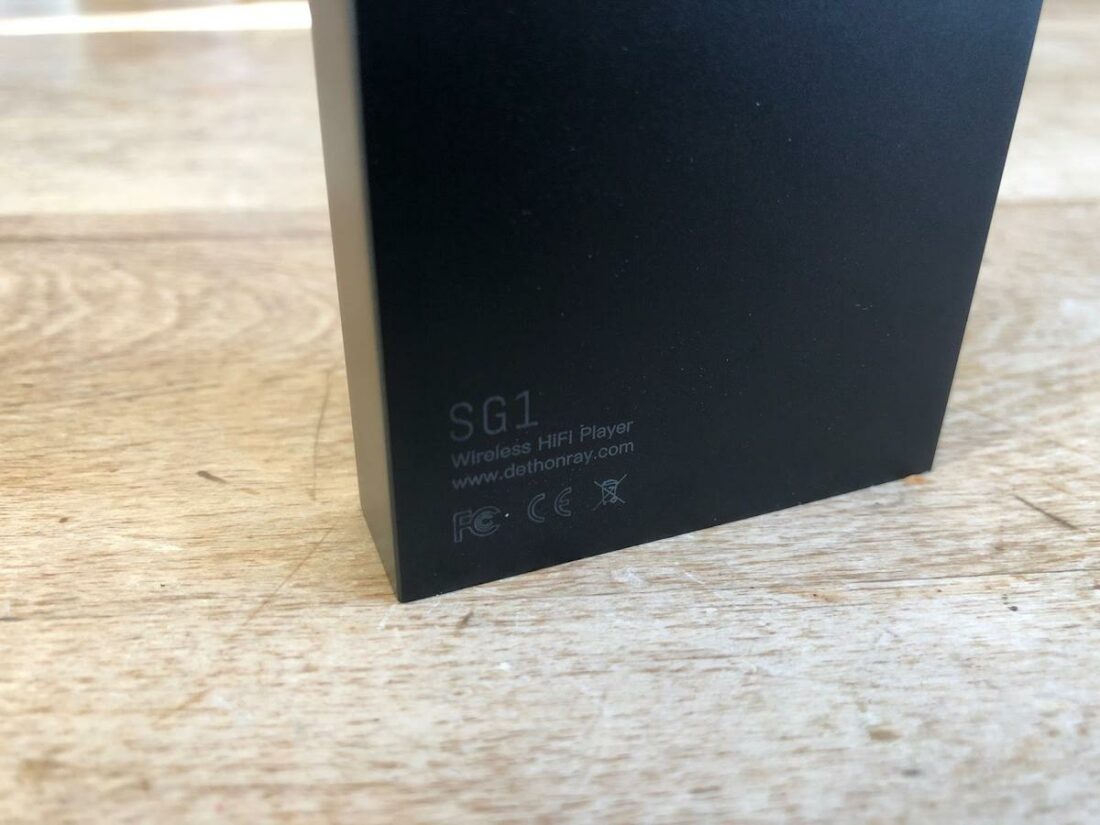
Bluetooth
The Bluetooth connection supports SBC, AAC, aptX, aptX-L, aptX-LL, aptX-HD, and LDAC codecs, which is pretty much as good as it gets for wireless. The connection remains consistent between my phone/DAP and I encounter no problems with reasonable distance and use.
I do occasionally have to disconnect and reconnect the SG-1 when first powering it on. It appears connected, but no sound is heard. A power off/on and a disconnect/reconnect on the player seems to fix things. A little annoying – but not unworkable. Long pressing the pause/play button for 3 seconds clears the SG-1’s saved connections.
Unfortunately, this isn’t the only problem I encountered.
Firmware update
When I first received the SG-1, I couldn’t get it to play. It appeared to connect properly to my devices, but try as I might, there was no sound.
I figured I would try updating the firmware, just in case that fixed some sort of internal software error. What followed was an ultimately successful, if somewhat frustrating experience. Dethonray provides Google Drive links for firmware via their Downloads page. Click on ‘Wireless AMP’ and you are brought to the drive which contains 3 different firmware files.
My first issue was figuring out what file to use. One file is entitled ‘SG1 Firmware.rar’ which seems to be the most obvious choice, but it’s the oldest file in the directory (12-July-22). I ended up choosing the ‘Firmware-2022-1018.rar’ file as it is the newest (25-Oct-2022).
According to the manual, run the ‘CH341SER.EXE’ file first to install the device driver. Of note, the names are entirely inscrutable and this process will only work on Windows – Mac users are left out. I received repeated failures on my Windows 10 desktop, and the driver would not install. Switching to an older Windows 10 laptop, it installed fine.
Luckily, I had multiple machines on hand. YMMV.
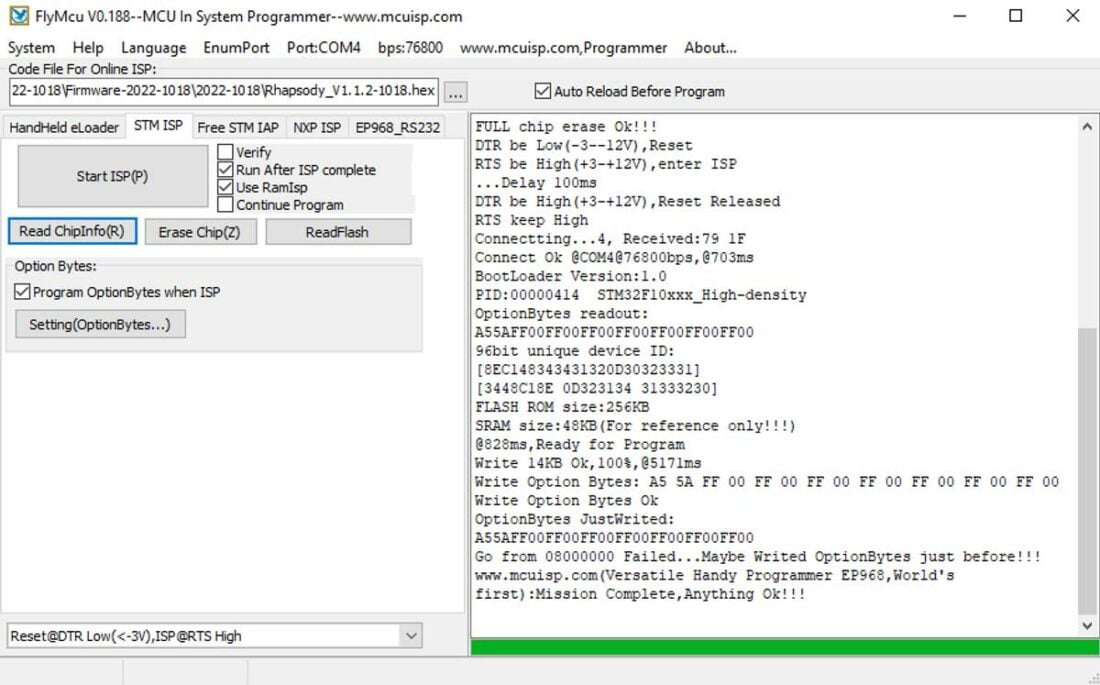
Next, run the FlyMcu.exe program. This isn’t for the faint of heart, as there are very many unexplained and unintelligible options that one can only assume would harm the SG-1 if accidentally selected. After a few connects, disconnects, and reboots, eventually the device was discovered by FlyMcu.
I selected the Serenade firmware, clicked the ‘Start ISP(P)’ button as instructed in the manual, and a few moments later received the “EP968, World’s first):Mission Complete,Anything Ok!!!” message. Yes, that’s how it shows up.
The message seems positive if entirely nonsensical, and sure enough, the SG-1 is now alive.
Whew.
A simplified flashing program is needed if this is how Dethonray intends the end user to update and customize the device.
There are two firmware variants available. The default Rhapsody is described as “vigorous & flamboyant” while Serenade is portrayed as “exquisite & silky.” Note that these are intended as sound descriptors, so they leave quite a bit up to the listener’s interpretation.
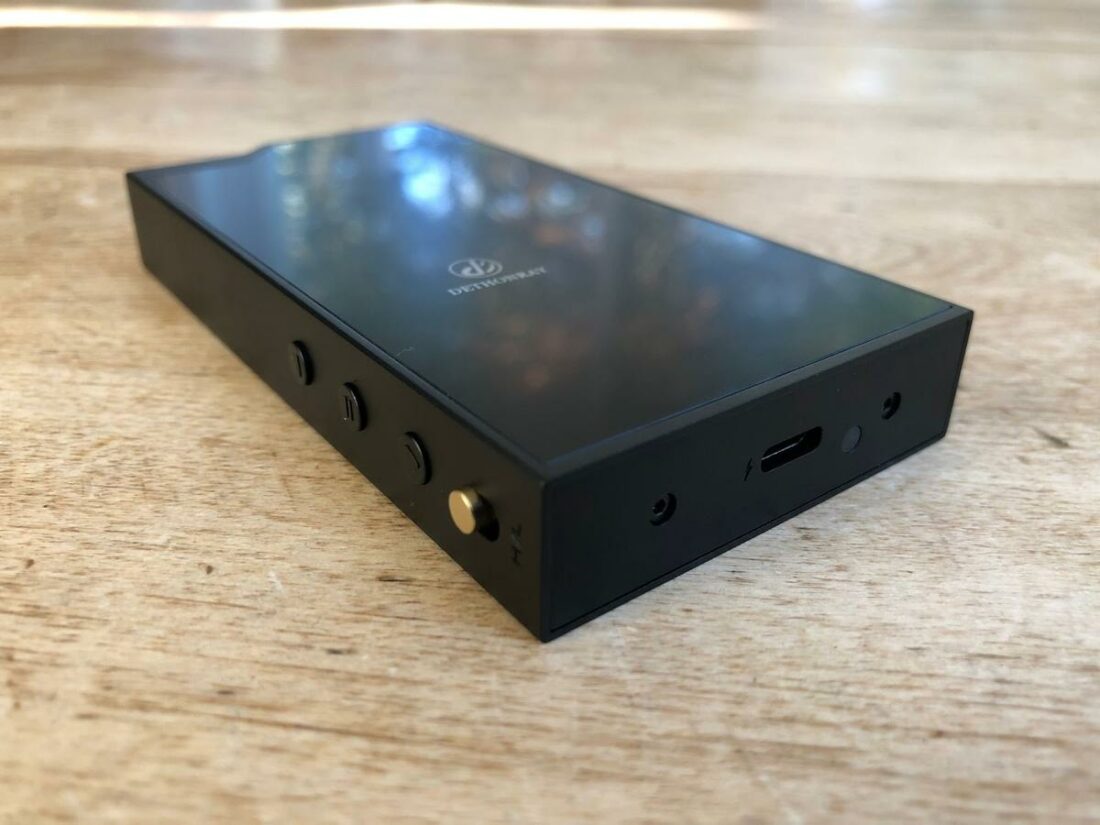
Dethonray Pegasus SG-1 Sound
mishmash.
With most headphones and IEMs, there is a slight audible hiss discernable when no music is playing. This is lessened with more difficult-to-drive headphones and cannot be heard with music playing.
Others have measured the SG-1 and, like other boutique products, it tests poorly but sounds good. I don’t have the test gear to provide my own measurements, so you are stuck with my subjective impressions. Let’s just say that if SINAD is everything to you, the SG-1 isn’t it.
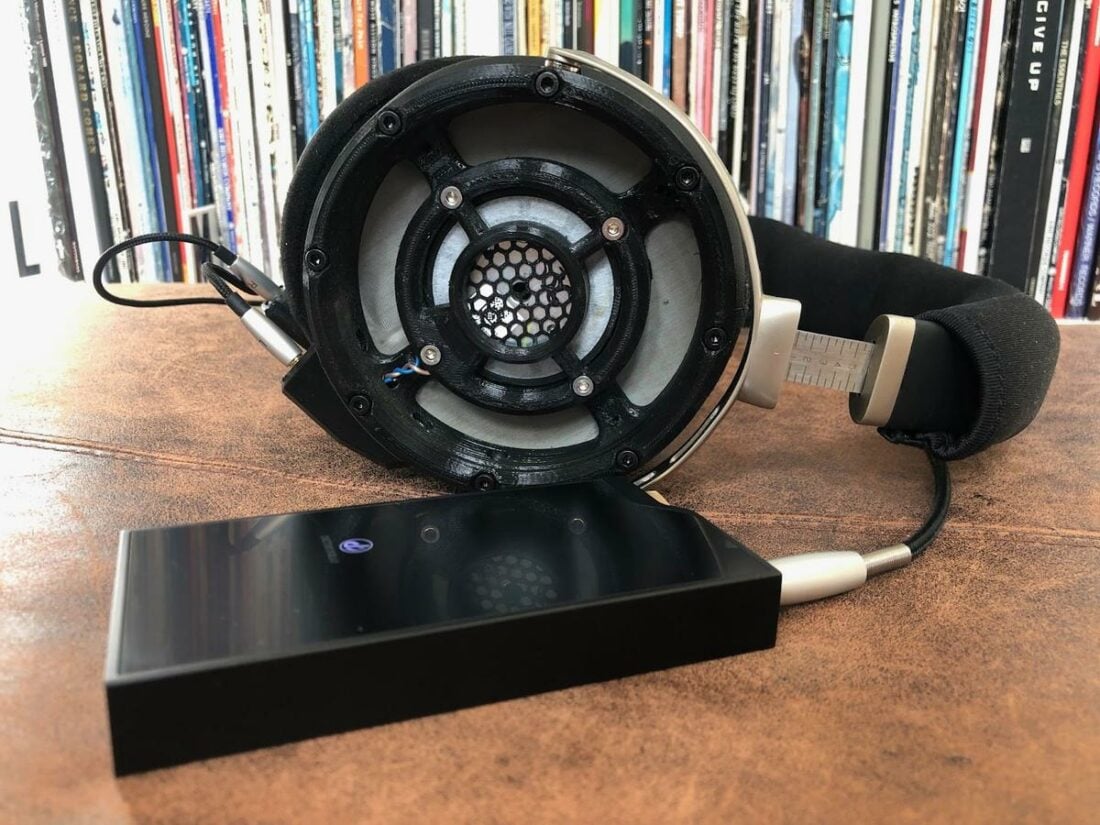
So, here’s where we will need to part ways with the measurement-first crowd. Likely a Bluetooth-only device is enough to discourage the number-loving purists from the start.
Much like tube amplifiers, the SG-1 is the type of small-scale creation that will appeal only to a certain type of audiophile. Those folks will tell you that the numbers aren’t everything, and a certain amount of distortion breathes musicality and emotion into the playback experience.
The SG-1 presents a rich, full sound, emphasizing lower frequencies and smoothing out the top. It has a presence and emphasis more in touch with big Class-A desktop amplification than small sterile dongles. The sound signature sounds big, lush, and full.
Harnessing some sort of futuristic alien technology from a remote galaxy, Dethonray managed to make a device that doesn’t sound lacking in detail, as some lesser Bluetooth devices can.
Dynamics are especially impressive, although the overall output power is more suitable for average-efficiency headphones and IEMs, rather than outliers in either direction. Exceptionally efficient or ultra-low impedance IEMs don’t match well – the elevated noise floor is a concern. And, even on high gain, there just isn’t enough power to make challenging loads like the HiFiMan HE6se perform.
Bass and midrange reproduction are the strength of the SG-1, while the treble is somewhat attenuated. High-frequency roll-off is common with Bluetooth devices, but the SG-1 makes it sound like a purposeful tuning decision rather than a limitation of the technology. Clarity and transparency are satisfactorily maintained.
The lower frequencies add warmth and presence to the signature, while the calm upper end keeps things pleasant. It’s a colored, enjoyable sound with plenty of oomph.
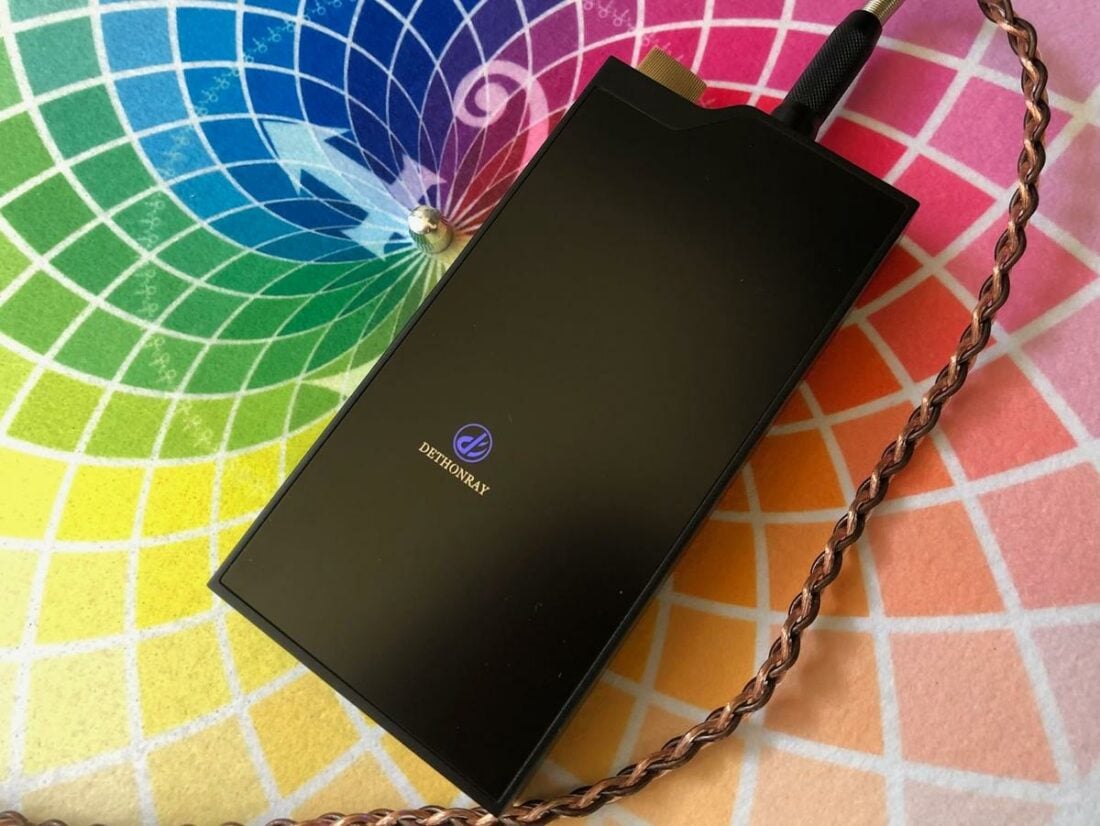
Where to Buy
Conclusion
I appreciate the odd ducks in a pond full of sameness. The audio industry is great at making virtually indistinguishable products (just look at the number of ESS-based dongle DACs out there). Seemingly, with every generational evolution, things tend to converge toward the same product with similar specs, features, and size.
But then there are the weirdos. The little guys who march to the beat of their own drum. Who do things their own way. Who either make perfect sense to the purchaser or appear to be from another planet.
Dethonray’s SG-1 is a stranger in a strange land. Rather than do it all, or even what everyone else does, it does only one thing. Bluetooth. Perfect measurements as per the norm? Nope. Regular old volume control? Not so much.
Subjectively, it sounds great. Rich, full, and dynamic. A big organic sound, very different from sterile and objectively better-measuring devices.
Unfortunately, I have a hard time overlooking the bugs and unfinished feeling software. Making the purchaser a beta tester and fixing things with software updates isn’t fun for consumers. So, the SG-1 isn’t for everyone, and likely most folks will want a more straightforward do-it-all device.
Who is the SG-1 for?
For the tube folks or the r2r DAC lovers who value the listening experience over the numbers. Or those that appreciate the quirkiness and uniqueness of a boutique brand’s creation. And are willing to pay a premium for this experience.
For this type of listener, who desires a portable Bluetooth device, the SG-1 is likely exactly what they want.
